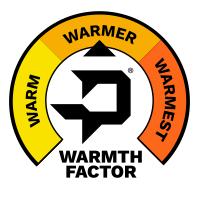
The Differences Between Microfleece and Fleece Fabric
When thinking of the word fleece, sheep’s wool may come to mind, but fleece isn’t always made of wool; it can be made from synthetic fibers, typically from polyester. Part of what makes fleece so popular is that it’s softer and more lightweight than wool, but that’s not all there is to consider. Though microfleece is a similar fabric, and it’s fleece’s top contender, they’re certainly not the same thing. To help clarify, here are the differences between microfleece and fleece fabrics.
What Is Fleece?
As previously mentioned, fleece is a fabric that can be made from polyester. While the occasional natural fiber, such as hemp, may be combined into it, this is usually to change the texture. Today, fibers are made by a chemical reaction between petroleum and other petroleum derivatives. The resulting product is heated and spun to make thin threads. When brushed after being manufactured into fabric, it has a pile surface on both sides, allowing air pockets to sit between the threads and hold more warmth.
What Is Microfleece?
Microfleece is very similar to fleece in the sense that they are made of the same material and produced in the same way. Microfleece fibers are thinner than silk strands. This makes the fabric itself incredibly lightweight yet warm. Microfleece also allows moisture to evaporate very quickly, making it a great option for those who want to stay warm in snowy conditions.
What Are the Differences Between the Two?
In truth, the two are very similar, and while the differences between microfleece and fleece fabrics seem minimal to the average consumer, they still have their importance. Both fleece and microfleece are warm, moisture-wicking, light, and breathable fabrics. However, microfleece is a little more breathable and moisture-wicking than regular fleece due to the thinness of the fibers. Occasionally, fleece can be made from natural materials, but you will seldom find microfleece made from anything other than polyester, nylon, or acrylic.
In terms of which one is better, that completely depends on the user. If you just want to stay warm, synthetic fleece is perfectly suitable. But if you want to stay warm in inclement weather, microfleece may be the better option. Ultimately, it’s best to try both to see which suits you best.
If you’re looking for high-quality microfleece thermals to keep you warm as the weather gets colder, Polarmax has you covered. Here, we sell odor-blocking, four-way stretch microfleece made with hydrophobic yarns to help you stay warm and dry.

